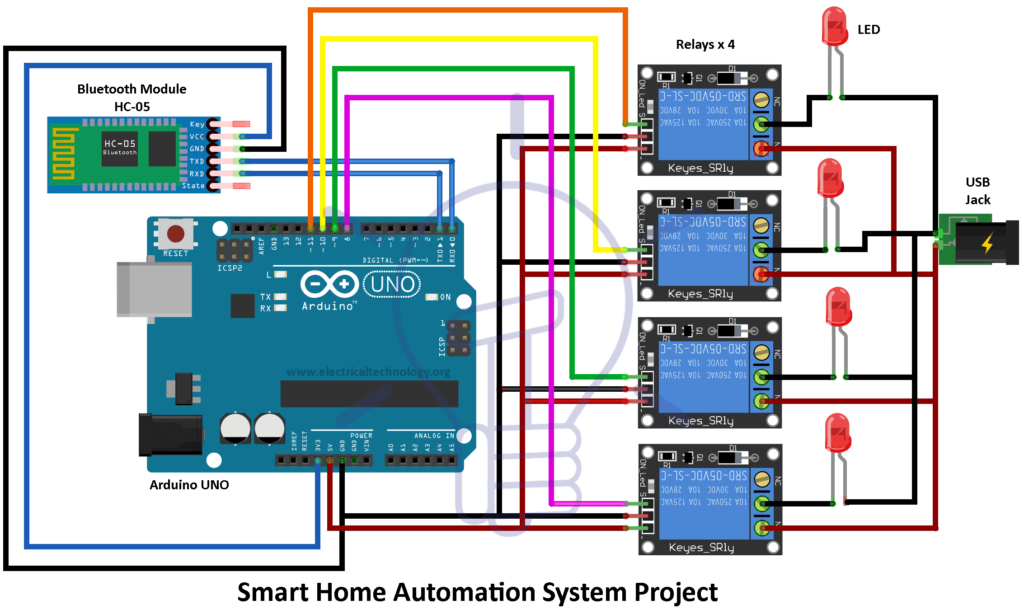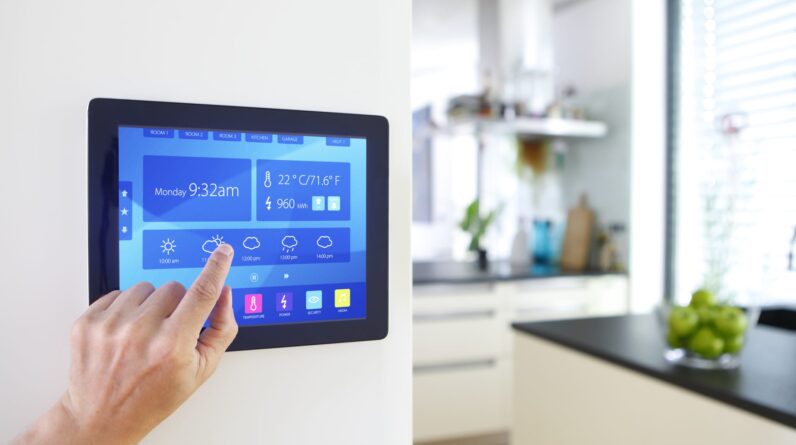
Thinking of transforming your home into a futuristic space where everything is connected and controlled with just a touch of a button? Look no further! In this article, we will guide you through the exciting world of setting up a smart home automation system. From choosing the right devices to integrating them seamlessly, we’ll help you turn your home into a smart haven that simplifies your life. So, get ready to embrace the future and transform your home into a hub of convenience and efficiency!
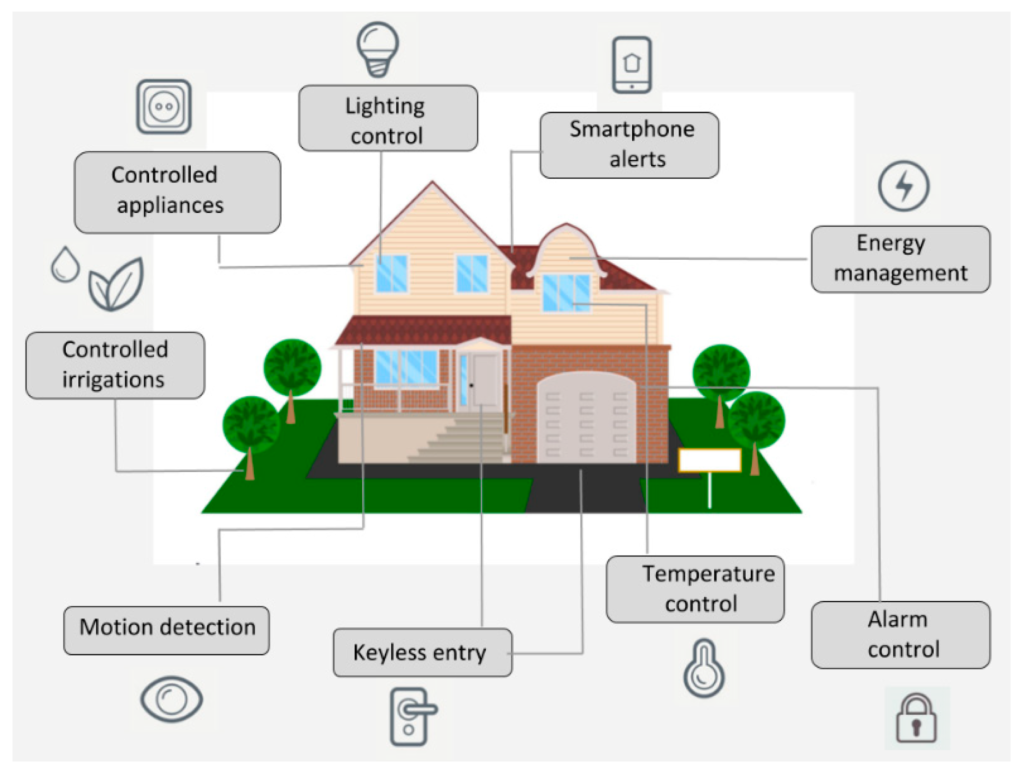
Planning Your Smart Home Automation System
Assess your needs and priorities
Before setting up a smart home automation system, it’s important to assess your needs and priorities. Consider what aspects of your home you want to automate and what functionalities are important to you. Are you looking to enhance security, improve energy efficiency, or simply add convenience to your daily life? By understanding your needs and priorities, you can make informed decisions when choosing the right smart home devices and technologies.
Create a budget
Creating a budget is essential when planning your smart home automation system. Take into account the cost of the devices you want to install, any additional accessories or components, as well as any professional installation services you may need. It’s important to set a realistic budget to ensure that you can afford the system you desire without overspending.
Research available technologies
With a plethora of smart home devices and technologies available in the market, it’s important to do thorough research. Look into the different brands and models, compare their features, and read reviews from other users. Consider factors such as compatibility, ease of use, and reliability. This research will help you make informed decisions and select the right technologies that align with your needs and preferences.
Determine your smart home goals
Once you have assessed your needs and researched available technologies, it’s time to determine your smart home goals. Think about the specific functionalities you want your system to have. Do you want to control your lights and thermostat remotely? Are you interested in integrating voice assistants or speakers into your home? Clearly defining your goals will help guide you in making the right choices when selecting devices and configuring your automation system.
Choosing the Right Smart Home Devices
Start with a central hub
When it comes to smart home automation, a central hub acts as the brain of your system, connecting all the devices together. Start by selecting a reliable and compatible central hub that suits your needs and goals. Popular options include smart speakers with built-in hub capabilities or dedicated hub devices specifically designed for smart home automation.
Select compatible devices
Compatibility between devices is crucial to ensure smooth integration and communication within your smart home system. Check the compatibility of each device with your chosen central hub and make sure they can work together seamlessly. This step will save you from frustration and avoid potential issues down the line.
Consider the ecosystem
When choosing smart home devices, it’s worth considering the ecosystem they belong to. Some brands offer a wide range of devices that can all be controlled through a single app or voice assistant. This can simplify the management of your system and enhance the user experience. However, keep in mind that sticking to a specific ecosystem may limit your options in terms of device selection.
Evaluate security features
Security is a paramount consideration when setting up a smart home automation system. Look for devices that offer robust security features, such as encryption, two-factor authentication, and regular firmware updates. This will help protect your system from potential vulnerabilities and ensure the privacy of your data.
Establishing a Network Infrastructure
Assess your existing Wi-Fi network
Before adding smart home devices to your network, it’s important to assess the strength and coverage of your existing Wi-Fi network. Ensure that your router is capable of handling the increased traffic and that its signal reaches all areas where you plan to install devices. If necessary, consider upgrading your router for better performance and coverage.
Expand your network range
If you find that your current Wi-Fi network doesn’t cover your entire home, you may need to expand its range. There are several options to achieve this, including mesh Wi-Fi systems or Wi-Fi range extenders. These devices can enhance the coverage and stability of your network, ensuring a reliable connection for all your smart home devices.
Consider wired connections
While Wi-Fi is the most common method of connecting smart home devices, consider incorporating wired connections for devices that require a more stable and dependable connection. Some devices, such as security cameras or home entertainment systems, may benefit from being hardwired to your network. Ethernet cables can provide a more consistent and reliable connection, especially for devices that require high bandwidth.
Set up a guest network
To enhance security and protect your main network, consider setting up a separate guest network for visitors. This will allow guests to connect to the internet without accessing your smart home devices or compromising the security of your main network. Most routers support the creation of guest networks, and it’s a simple yet effective way to maintain control over your system.
Setting Up the Central Hub
Choose a suitable location
The central hub plays a crucial role in your smart home automation system, so it’s important to choose a suitable location for it. Ideally, the hub should be centrally located to ensure optimal signal strength and coverage. Avoid placing it in areas with high levels of interference, such as near large appliances or walls with electrical wiring.
Connect the hub to the network
To establish communication between the central hub and your smart home devices, you need to connect it to your network. Follow the manufacturer’s instructions for connecting the hub to your Wi-Fi network. This usually involves using a mobile app or a web portal to complete the setup process. Once connected, ensure that the hub has a stable internet connection for seamless operation.
Install required software
After connecting the hub to your network, you may need to install specific software or apps provided by the manufacturer. This software allows you to control and configure your smart home devices from a central interface. Follow the installation instructions provided and ensure that all software is up to date for optimal performance.
Pair devices with the hub
Once the hub is set up and the required software is installed, you can start pairing your smart home devices. Each device will have its own pairing process, which is typically outlined in the manufacturer’s instructions. This process may involve pressing a button on the device or using an app to connect it to the hub. Follow the instructions carefully to ensure successful pairing and integration with your automation system.
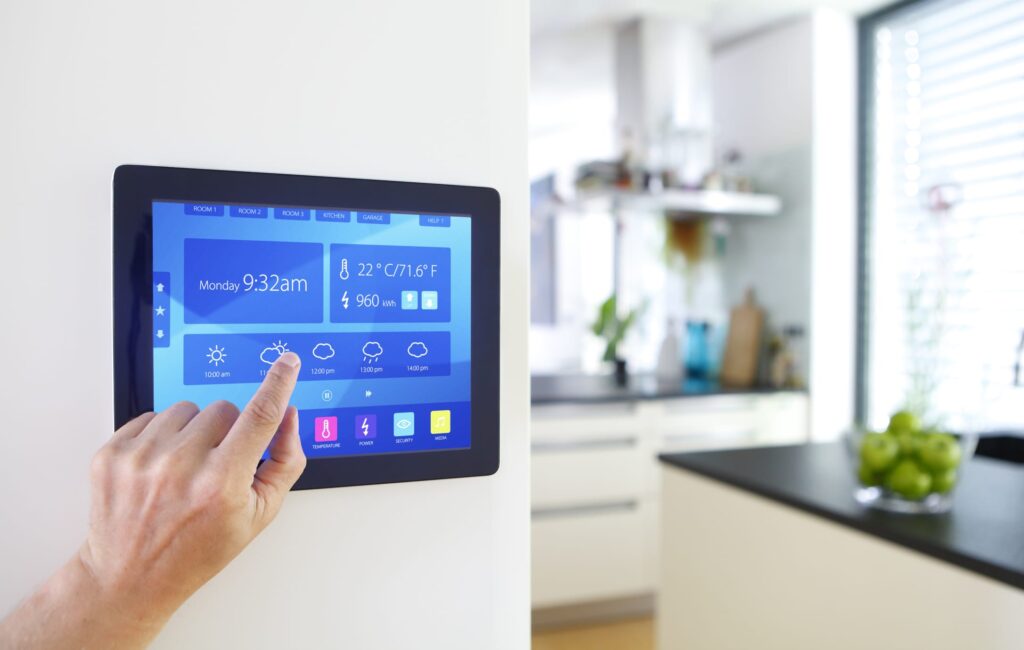
Installing and Configuring Smart Home Devices
Install and connect lighting systems
One of the most popular smart home automation features is the ability to control lighting systems. To install and connect smart lighting, begin by replacing existing bulbs or fixtures with compatible smart bulbs or switches. Follow the manufacturer’s instructions for installation and pairing with the central hub. Once installed, you can control and automate your lighting through the hub’s software or compatible apps.
Set up smart thermostats
Smart thermostats offer energy-saving benefits and allow you to control the temperature of your home remotely. To set up a smart thermostat, follow the manufacturer’s instructions for installation and pairing with the hub. Once connected, you can program temperature schedules, adjust settings remotely, and even integrate it with other smart home devices for automated temperature control.
Install smart security devices
Enhancing the security of your home is another popular aspect of smart home automation. Install smart security devices such as door/window sensors, motion detectors, and security cameras according to the manufacturer’s instructions. These devices can be configured to send alerts to your smartphone or trigger other actions when any unusual activity is detected.
Configure voice assistants and speakers
If you want to control your smart home devices using voice commands, configure voice assistants and speakers such as Amazon Alexa or Google Assistant. Follow the manufacturer’s instructions for setting up these devices and integrating them with your central hub. Once configured, you can use voice commands to control various aspects of your smart home system, from turning on lights to adjusting temperature settings.
Creating Scenes and Automations
Define your desired scenes
Scenes allow you to control multiple smart home devices simultaneously with a single command or action. Define your desired scenes based on specific scenarios or activities in your daily life. For example, you can create a “Good Morning” scene that turns on the lights, adjusts the thermostat, and plays your favorite music when you wake up. Identifying and defining these scenes will make it easier to automate your daily routines.
Set up automation rules
Automations take your smart home system to the next level by allowing devices to interact with each other based on specific triggers or conditions. Set up automation rules based on your desired scenarios. For instance, you can create an automation that turns off all lights and locks the doors when you leave the house. Automations can be configured through the hub’s software or compatible apps, and they provide a hands-free and seamless experience.
Utilize geofencing capabilities
Geofencing is a powerful feature that uses your smartphone’s location to trigger actions when you enter or leave a defined area. By utilizing geofencing capabilities, you can automate certain tasks based on your presence. For example, you can set up an automation that turns on the lights and adjusts the thermostat as soon as you approach your home. This adds an extra level of convenience to your smart home system.
Ensure compatibility between devices
When creating scenes and automations, it’s important to ensure compatibility between your smart home devices. Some devices may not be able to interact with each other due to different protocols or limitations. Double-check the compatibility of devices and consult the manufacturer’s documentation to ensure that they can work together seamlessly. This will ensure that your desired scenes and automations function as intended.

Monitoring and Controlling Your Smart Home
Install relevant mobile apps
To monitor and control your smart home devices remotely, install relevant mobile apps provided by the manufacturers. These apps allow you to access and manage your smart home system from your smartphone or tablet, no matter where you are. Ensure that the apps are compatible with your devices and keep them updated for the latest features and security enhancements.
Access and control devices remotely
One of the main benefits of a smart home automation system is the ability to access and control devices remotely. Whether you’re at work or on vacation, you can use your smartphone or tablet to turn on/off lights, adjust thermostat settings, or even check camera feeds. Remote access provides convenience, peace of mind, and greater control over your home from anywhere in the world.
Monitor energy usage
Smart home automation systems often come with features that allow you to monitor energy usage in real-time. Through the central hub’s software or compatible apps, you can track your energy consumption and identify areas where you can save on energy. This knowledge empowers you to make informed decisions and take actions to reduce your carbon footprint and lower your electricity bills.
Enable notifications and alerts
To stay informed about the status of your smart home devices, enable notifications and alerts. Set up notifications to receive updates or alerts when certain events occur, such as the detection of motion, the opening of a door, or an abnormal change in temperature. Notifications can be sent to your smartphone or other devices, keeping you informed and ensuring that you can take appropriate action if needed.
Enhancing Security and Privacy
Secure your network
Securing your network is crucial to prevent unauthorized access to your smart home devices and protect your data. Start by changing the default login credentials of your router and network devices to strong and unique passwords. Additionally, enable network encryption (WPA2 or newer) and disable remote administration to further enhance security. Regularly update your router’s firmware to patch any security vulnerabilities.
Create strong and unique passwords
Creating strong and unique passwords for your smart home devices is an essential step in ensuring the security of your system. Avoid using easily guessable passwords and consider using a password manager to securely store and manage your credentials. Strong passwords should include a combination of uppercase and lowercase letters, numbers, and special characters.
Update firmware regularly
Regularly updating the firmware of your smart home devices is important to keep them secure and up to date with the latest features and bug fixes. Manufacturers often release firmware updates to address security vulnerabilities and improve the performance of their devices. Check for firmware updates regularly and follow the manufacturer’s instructions to install them promptly.
Protect your privacy
With the increasing number of connected devices in a smart home system, it’s important to protect your privacy. Always read and understand the privacy policies of the devices and apps you use, ensuring that your personal information is handled securely. Consider disabling features that may collect or share unnecessary data, and be cautious when granting permissions to third-party apps or services.
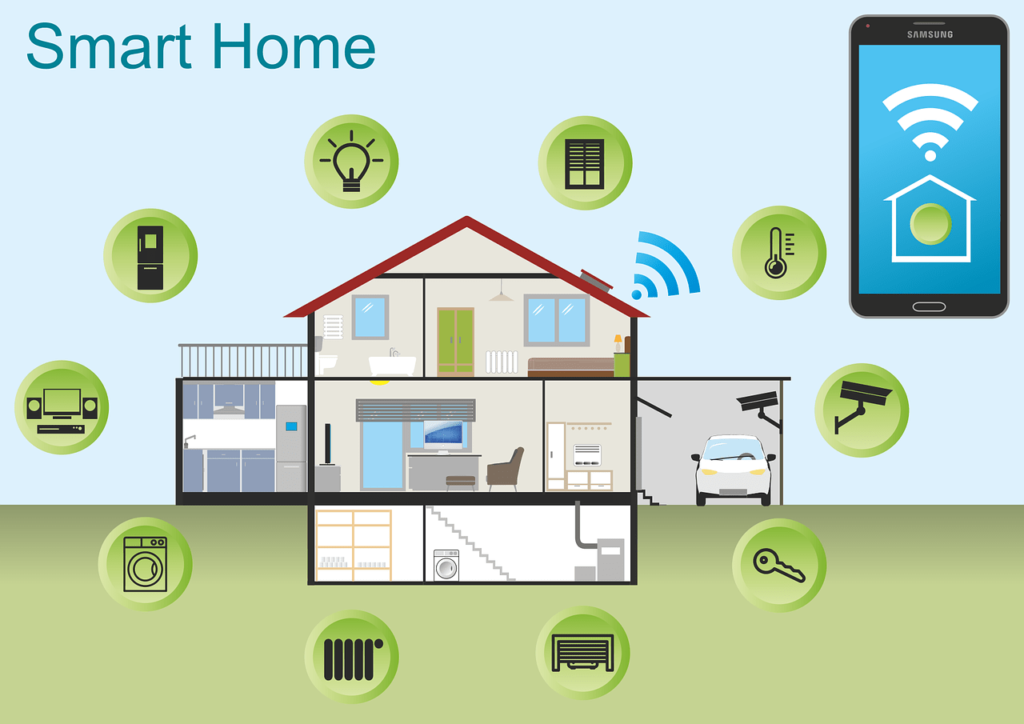
Troubleshooting and Maintenance
Follow device-specific troubleshooting guides
Inevitably, you may encounter issues or challenges when setting up or using your smart home devices. Most manufacturers provide troubleshooting guides or online support resources to help you resolve common problems. Familiarize yourself with these resources and follow the recommended troubleshooting steps before seeking further assistance. Often, simple solutions can fix most issues.
Contact customer support if needed
If you are unable to resolve an issue on your own, don’t hesitate to contact the customer support of the manufacturer. They have specialized knowledge and expertise to assist you in resolving more complex problems. Provide them with the necessary details about your setup and the issue you’re facing, and they will guide you through the troubleshooting process or offer direct solutions.
Regularly update software and firmware
Regularly updating the software and firmware of your smart home devices is essential to ensure optimal performance, security, and access to new features. Keep track of updates released by the manufacturers and install them as soon as they become available. Regular updates will not only improve the functionality of your devices but also address any potential security vulnerabilities.
Perform routine maintenance
To keep your smart home automation system in optimal condition, perform routine maintenance on your devices and network. This may involve cleaning and inspecting sensors, replacing batteries, checking for firmware updates, and ensuring all devices are functioning properly. Regular maintenance will prolong the lifespan of your devices and maintain the efficiency of your system.
Expanding Your Smart Home System
Evaluate additional device needs
As you become more comfortable with your smart home automation system, you may identify additional device needs. Consider what other aspects of your home you would like to automate or control. Do you want to add smart locks, motorized blinds, or a smart entertainment system? Evaluate your needs and priorities and assess the compatibility of new devices with your existing system.
Expand your ecosystem
Expanding your ecosystem refers to adding additional devices from the same brand or compatible brands that integrate seamlessly with your existing smart home system. By expanding your ecosystem, you can simplify management and control by having all devices connected to a single hub or controlled through a single app. Check the compatibility of new devices before purchasing to ensure smooth integration.
Integrate advanced features
As you gain more experience with your smart home system, you may want to explore advanced features and integrations. This could include integrating your system with third-party services, such as home security monitoring or energy management platforms. Explore the capabilities of your hub and devices, as well as any available integrations, to enhance the functionality of your smart home automation system.
Consider professional installation and assistance
If you are not comfortable with the technical aspects of setting up or expanding your smart home system, consider seeking professional installation and assistance. Many companies offer services for installing and configuring smart home devices, ensuring that everything is set up correctly and integrated smoothly. Professional assistance can save you time and provide peace of mind knowing that your system is in capable hands.
Setting up a smart home automation system can be a rewarding experience that enhances the comfort, convenience, and security of your home. By carefully planning, selecting the right devices, establishing a reliable network infrastructure, and configuring your system, you can create a smart home that meets your needs and exceeds your expectations. Enjoy the benefits of automation, energy efficiency, and convenience as you transform your house into a modern, intelligent home.
